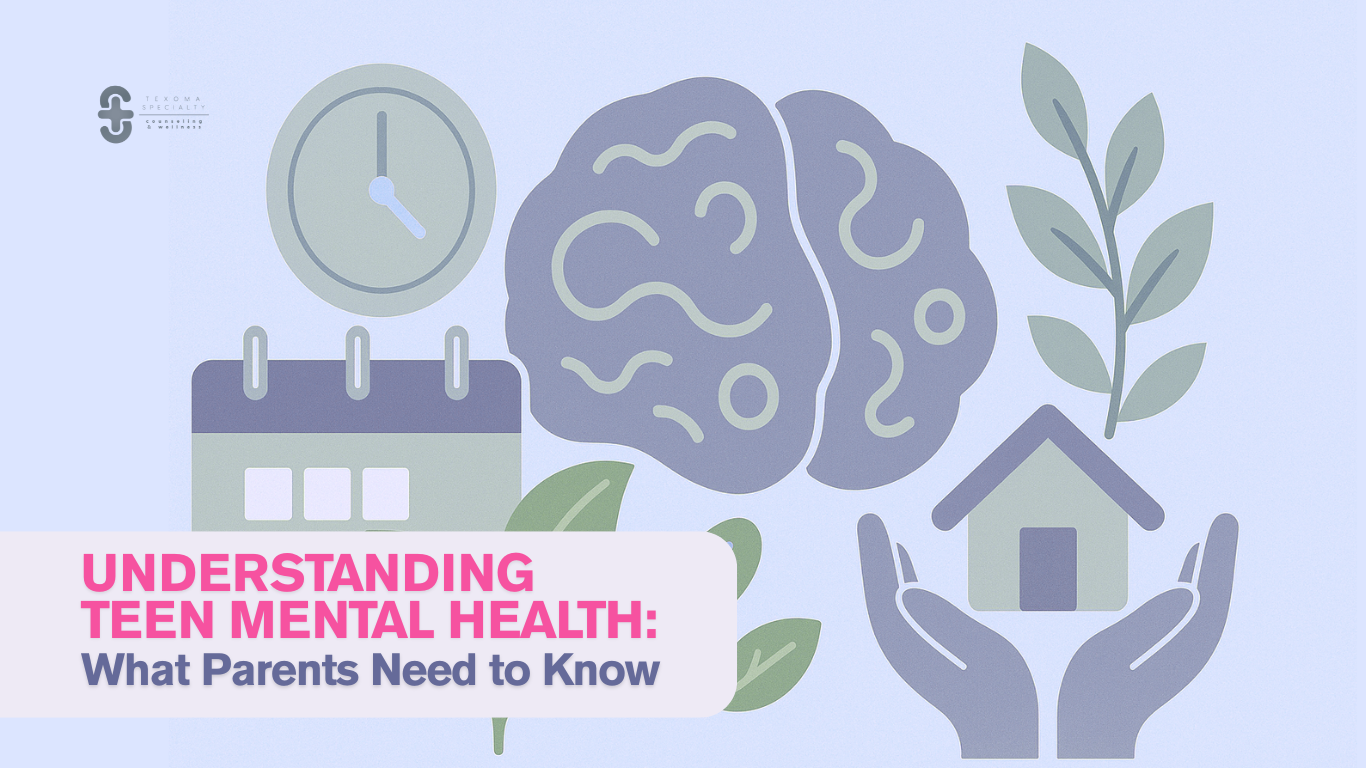Understanding Teen Mental Health: What Parents Need to Know
A Focus on Teen Mental Health
Teen mental health is a critical aspect of adolescent development, shaping how young people think, feel, and act as they navigate the challenges of growing up. With nearly 40% of high school students reporting persistent feelings of sadness or hopelessness and 1 in 5 teens experiencing symptoms of anxiety or depression, it’s clear that mental health concerns among teens are both common and urgent.
As a parent or caring adult, understanding what teen mental health is, why it matters, and how to spot red flags can make all the difference.
What Is Teen Mental Health? 🤔
Teen mental health refers to the emotional, psychological, and social well-being of adolescents. It affects how teens handle stress, relate to others, and make healthy choices. Mental health challenges can range from everyday stress and anxiety to more serious conditions like depression, substance use, and suicidal thoughts.
Why Teen Mental Health Matters 📈
Adolescence is a time of rapid change—physically, emotionally, and socially. Half of all lifetime mental illnesses begin by age 14, and untreated mental health issues can impact academic performance, relationships, and long-term well-being.
Early identification and support are crucial for positive outcomes and can help prevent more serious consequences, including self-harm and suicide.
Red Flags: What Parents Should Watch For 🚩
Being aware of warning signs can help you intervene early. Red flags may include:
Persistent sadness, hopelessness, or withdrawal from friends and activities
Sudden changes in mood, behavior, or academic performance
Excessive worry, panic, or irritability
Changes in sleep or eating patterns
Talking about death, suicide, or feeling worthless
Self-harm or risky behaviors
Increased substance use
👉 If you notice these signs, don’t ignore them—early action can be life-changing.
Risk Factors Parents Can Identify ⚠️
Some teens are at higher risk for mental health challenges. Risk factors include:
Family history of mental health conditions
Excessive social media use or exposure to online bullying
Academic pressure or perfectionism
Traumatic experiences (loss, abuse, family conflict)
Lack of social and emotional support
Substance use or experimentation
Chronic health issues
What to Do When You Notice Red Flags 💡
Open the Conversation: Let your teen know you’re concerned and willing to listen without judgment.
Validate Their Feelings: Avoid minimizing their experiences. Instead, acknowledge their emotions and struggles.
Encourage Professional Help: If signs persist or worsen, reach out to a mental health professional.
Monitor Social Media and Screen Time: Set healthy boundaries and talk about online experiences.
Promote Healthy Habits: Encourage regular sleep, balanced nutrition, physical activity, and stress reduction.
Stay Involved: Maintain open communication and make time for family activities.
Know When to Seek Immediate Help: If your teen talks about suicide or self-harm, seek help right away.
Resources & Support at Texoma Specialty Counseling 🌿
At Texoma Specialty Counseling, we offer a range of services to support your teen’s mental health, including:
Individual and family counseling for adolescents and parents
Group therapy and wellness classes
Recovery Academy for eating disorders and body image support
Yoga, mindfulness, and sound bath sessions for stress relief
Our experienced therapists are here to guide your family through every step. If you’re concerned about your teen’s mental health, don’t wait—reach out today.
👉 Take the first step:
Contact us to schedule a consultation or sign up for our free newsletter to receive a digital wellness guide and ongoing support for your family.
Your involvement and support can make all the difference in your teen’s journey toward health and resilience. 💙


